
For many of us, our work phone and our personal phone are one and the same. Just any old phone isn't going to cut it when you need to meet a deadline — a phone with built-in features that make it easier to get things done is almost a must.
For this article, we defined productivity as being able to accomplish the most tasks in the shortest period of time. We looked at phones that help us achieve common workplace goals while minimizing the distractions of our personal life. Whether you're using an Android device or an iPhone, your phone is more than capable of multitasking; performing two or more actions without any slowdown.
After extensive testing, we've compiled a list of the best phones up to the task. These phones offer the most versatility, whether it's taking notes or making calls. These devices will help you accomplish everything on your to-do list at work, then everything you need to do when you get home.
Table of Contents
- Key Comparison Points
- Methodology
- Phone 1: Samsung Galaxy Note 10+
- Phone 2: BlackBerry Key2
- Phone 3: Google Pixel 3 XL
- Phone 4: Apple iPhone 11 Pro Max
- Phone 5: HTC U12+
Comparison Chart

Jon Knight/Gadget Hacks
Key Comparison Points
- Available RAM: The most RAM (memory) available on any variant of the phone.
- Storage Options: The different internal storage options available.
- Screen Size: The size of the phone's display.
- Bluetooth Version: The highest version of Bluetooth the phone supports. Bluetooth is backwards compatible so a newer Bluetooth version is always preferable.
- Video Output over USB-C: Whether the smartphone supports USB-C Alternate Mode, which dedicates wires in the USB-C cable to output video.
- Desktop Mode: When connected to a monitor or TV, whether or not the phone will display a different UI customized for an experience similar to most modern computers.
- Stylus: Whether the phone supports and/or includes a stylus for more precise interactions compared to using a finger.
- Physical Keyboard: Whether the phone includes a physical keyboard in its design. Physical keyboards offer the best typing experience, allowing you to feel individual keys and type accurately without looking.
- Fast Charging: Whether the phone supports fast charging and the highest wattage supported. The Galaxy Note 10+ is the only confirmed phone on our list that not only does 25 W using the included power brick, but a higher wattage (45 W) with the purchase of a separate charger.
- Wireless Charging: Whether the phone supports wireless charging and the highest wattage supported. We only included phones which supported the Qi standard.
- Wireless Power Sharing: The phone can wirelessly charge other Qi-enabled devices like earbuds, styluses, and even phones.
- Split Screen: Two apps can be viewed at the same time, side by side.
- Two Active Windows: In split-screen mode, both apps can be active at the same time. Usually, only one app is active and the other is in a paused state. However, when they are both active, you can play a video while playing a game in split-screen mode.
- Multi Window: Apps can be opened in small floating windows that can be positioned anywhere on the screen. Much like a desktop computer, these windows can be resized and allow you to open more than two apps at a time.
- Multiple Profiles: The phone can create multiple user profiles. Each profile has its own sandboxed data, letting you keep your work data separate from the personal data.
- Wireless Screen Mirroring: The default method available to wirelessly mirror your screen onto a TV or monitor.
- Always-on Display: Turning off all but a few pixels, the phone displays useful information such as new notifications even when the screen is off. OLED screens can turn off individual pixels, so battery consumption is minimal.
- Remap Hardware Buttons: Either through settings or a third-party app, being able to reconfigure the hardware buttons (such as volume buttons and power buttons) to launch apps or shortcuts.
- Remap Squeezable Frame: Either through settings or a third-party app, being able to reconfigure the squeeze gesture on the phone. Two phones in our list have pressure-sensitive areas that you interact with by squeezing, but only one gives you an easy way to remap the squeeze gesture.
- Remap Keyboard Buttons: Specific to phones with physical keyboards, being able to launch apps quickly by selecting different letters on the keyboard.
- Notification Channels: All alerts for a specific app are organized into categories that can be controlled individually. Each category has its own assortment of tools, allowing you to manage only those types of alerts from this app without having to stop all notifications from the app altogether.
- Grouped Notifications: Multiple notifications from the same app are grouped in the notification area, making alerts easier to manage.
- Modify Future Notifications: The ability to modify how notifications are received. Tools can include making similar alerts in the future to be delivered silently, turning off similar alerts, or even increasing priority.
- Snooze Notifications: An Android-exclusive feature, this option allows you to dismiss a notification for now, but have it come back later.
- Inline Responses: The ability to reply to a notification from messaging and email apps within the notification, without needing to open the app first.
- Set DND: The various options to automatically enable "Do Not Disturb" mode on the device. Every phone on our list lets you at least set it using a schedule, but some phones include additional ways that are based on location or events in your calendar.
- App Usage Limits: The daily use of an app can be limited to a set number of hours or minutes.
- App Shortcuts: By long pressing (or 3D Touching) an app, you can jump into certain actions within the app, saving you steps.
- Automate Tasks: The ability to perform multiple tasks with one command using the voice assistant. Each assistant calls this something different, but they operate similarly. For example, "Good Morning Siri" can turn on lights, open CNN, start the smart coffee maker, and much more using this feature.
- Widgets: The areas where you can place widgets on your phone. Widgets provide at-a-glance information based on the content of an app.
- Customizable Lock Screen: Whether you can modify the lock screen and, if so, what ways are available.
- Quick Adjust Wi-Fi & Bluetooth: The ability to change which Wi-Fi network or Bluetooth device you are connected to without opening Settings. This feature was previously a feature in Android and available to all iPhones (via the Control Center) that run iOS 13 or newer.
- Quick File Transfer: The default method of transferring files between devices on the phone. Link Sharing, Fast Share, and AirDrop establish a connection via Bluetooth, then transfer via Wi-Fi Direct. Android Beam uses NFC to establish the connection, then uses Bluetooth to transfer the file, which is much slower than Wi-Fi Direct.
- File Management: When you connect the smartphone to a computer, what files are accessible. Only Android gives you full access to the internal storage (except for the root folder, which requires root access), which permits you to create folders and files anywhere.
- Access Phone via Computer: The ability to manage missed calls, text messages, and notifications via a computer.
- Make Phone Calls From Other Devices: The ability to make phone calls from another device using your smartphone.
- Third-Party Keyboards: The ability to use keyboards from third-party developers instead of the preloaded keyboard that comes with the operating system. Third-party keyboards offer some advantages that include different emojis, customizable keyboards, personalized autocorrect, and more.
- Voice Assistant: The built-in voice assistant included in the smartphone. Voice assistants are deeply integrated into the operating system and can perform multiple tasks with only a voice command.
- Built-in Password Manager: Whether the phone includes a password manager as one of the preloaded apps. Besides security, password managers can now autofill your login information into websites and apps, saving you from having to input passwords and memorize them all. While every phone on our list includes the feature, only some include the ability to generate a new password.
- Dual App Sign-In: The native ability to sign in to the same app with two different accounts. Usually reserved for messaging and social media apps, this allows you to get alerts from both accounts and access each feed without the need to log in and out each time.
- Third-Party Email Hub: Whether or not the phone comes with an app that lets you add all your third-party email accounts. This makes it easier to manage all your different emails (e.g., work and personal), as they all appear in one place.
- Manage Docs & Spreadsheets: The default app(s) to manage any word documents or spreadsheets.
- Track Phone Usage: The ability to track your phone use. This includes how often specific apps alert you, how frequently you unlock your phone, the total hours you've spent on your phone, and more. With this data, these tools can then help you curb your usage, minimizing the distraction your phone can be.
- To-Do List: The built-in to-do list app. To-do lists let us take notes in a bullet point form so that we can track all our activities and check off the ones we perform.
- Scan Documents: Whether you can scan physical documents using your phone. Since all the phones on our list include this ability, we named the preloaded app which provides this function.
- Geekbench Battery Benchmark: The battery score of the phone after running Geekbench's battery benchmark. This is the score after running a complete discharge. The higher the score, the better. Pixel 3 XL scores were extrapolated from incomplete data since our test stopped at 16% battery life remaining.
- Geekbench Battery Test Duration: How long the phone lasted during the Geekbench battery benchmark. The longer the duration, the better the battery performs. Pixel 3 XL scores were extrapolated from incomplete data since our test stopped at 16% battery life remaining.
How We Chose These Phones
As usual, we focused solely on phones that were officially released in the US. As a result, there were some great optionsfrom Huawei and Xiaomi that didn't make it. Without an official release, they lack official US warranty even when offered by legit retailers (such as Amazon or B&H Photo). As a result, if you run into any issues, you're either without a phone or spending a lot of money to fix it.
We also chose to only highlight the latest offering from each OEM, allowing for a more diverse list. For example, only the Galaxy Note 10+ made the list even though Samsung's Galaxy S10 could have. Adding to that, we didn't consider any phones that were released more than two years ago to make sure our recommendations were future-proof. As a result, our list is comprised of a good blend of 2018 and 2019 phones, and will be updated in the future when new contenders emerge.
Finally, if the phone came in a series, we keyed in on the bigger version. While there are several phones on our list which have a smaller variant with similar specs, we believe the bigger screen is a clear tiebreaker when it comes to productivity. With multitasking features like split-screen, we felt the additional screen real estate would better serve most readers. However, it's possible to save some money without sacrificing much by getting the smaller version of one of these phones.
Phone 1: Galaxy Note 10+
When I think about productivity, Samsung's Galaxy Note series comes to mind first. It's one of the only phones with a stylus, which can dramatically improve your workflow when used correctly. In the past, Samsung has also used this series to showcase the latest and greatest specs. While the gap between it and the Galaxy S series has shrunk, the Note remains the best Samsung device on the market. And when it comes to being productive, it's in a league of its own.
Let's start with a few specs. Not only does this phone use the latest SoC from Qualcomm, but it also pairs it with 12 GB of RAM on all models. Whether you get the 256 GB entry model or the 512 GB model, you will have the highest amount of RAM available to a smartphone. This high memory ensures multiple tasks can run at the same time without the need to redraw. It has the largest display on our list at 6.8 inches, which gives you more than enough room to operate multiple apps at the same time. And with a single punch hole to house the camera, there are minimal bezels on any of the four sides.

Jon Knight/Gadget Hacks
The reason for Galaxy Note 10+'s unanimous victory is the small things, one of which is the S Pen. It's the only mainstream US phone with a stylus, which used to be standard on smartphones before the iPhone came around. While touch controls have gotten monstrously better, the precision of a stylus is unmatched. With the S Pen in hand, you can touch specific points on the screen every time, never worrying about accidentally pressing a nearby area instead.
But the S Pen does more than accurately touch the screen. It has evolved from the stylus of years past to include Bluetooth LE, so it can now remotely control your phone. This year, Samsung is opening up the S Pen to third-party apps, allowing you to remotely control even more apps using the S Pen's Air Actions. By default, Air Actions let you manage the volume of a video, take pictures without touching the phone, and much more.

Jon Knight/Gadget Hacks
Then there is Samsung DeX, which is a desktop mode for Samsung devices. By using a USB-C to DisplayPort cable, you can connect your phone to your monitor with a UI similar to Windows. With an adapter, you can even add a keyboard and mouse. What's new with the Galaxy Note 10+'s version of DeX is that it is compatible with laptops that are already running Windows or macOS. Using a USB cable, you can run DeX in a small window via an app on your computer.
The Galaxy Note 10+ can run two active windows at the same time. While every Android phone on our list can run split-screen mode, the Galaxy Note 10+ can do one better: you can have both split-screen apps in the foreground at the same time. Among other things, this means that if you're watching a video on one half of the screen, it doesn't pause when you interact with the other half.
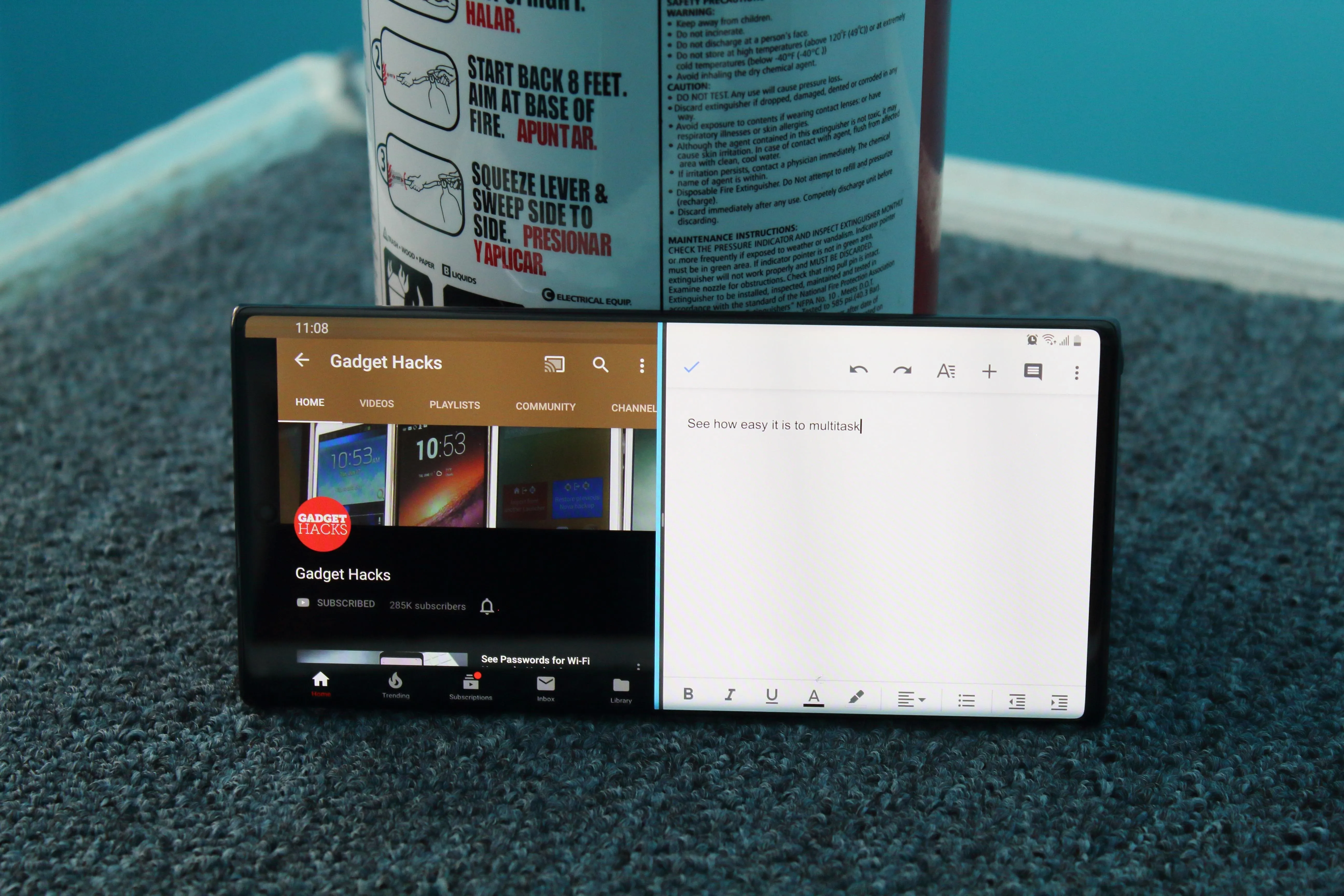
Jon Knight/Gadget Hacks
Speaking of split-screen, the Galaxy Note 10+ includes the option to use freeform windows. Known as Popup View, these small windows can house any app and can be resized to however large (or small) you need them to be. You can have have several of these windows open at once, so the experience is almost identical to a computer.
Finally, because of the flexibility of Android, the Galaxy Note 10+ is even more versatile. You can set up a work profile to act alongside your personal profile, so data isn't intertwined but is accessible on one device. You can set third-party apps as the defaults for different operation so that you can use your company messenger app of choice as a primary messenger. You can snooze notifications, which delays them for a specific length of time so you can deal with them later.
Overall, the Note 10+ is the best phone for your busy work and personal life. It allows you to be productive in most fields while keeping your home life separate. It can transform into a computer, allowing you to access your phone in the easiest way possible, and it can be remotely controlled via the S Pen. Along with its high RAM, large display, and useful features thanks to Android, it is the clear choice if you want to get a lot of stuff done.
Phone 2: BlackBerry Key2
When TCL released the BlackBerry Key2 in 2018, it was a phone that immediately stood out among the crowd. TCL attempted to bring the iconic BlackBerry design to a new audience, and they delivered. Once dominating the smartphone industry, these phones and their iconic keyboards were how smartphone users were productive, whether they were typing up a presentation or texting their friends. And same design still has a place now.
It starts with the physical keyboard. While software keyboards are significantly better than when they were at first, the standard has always been a physical keyboard. Think about it, most people can type faster on their computer keyboard than their smartphone, and the same is applicable to a physical keyboard on a phone. While it does take some time to get used to, your words per minute will be faster on a physical keyboard thanks to the ability to feel individual keys as you type.
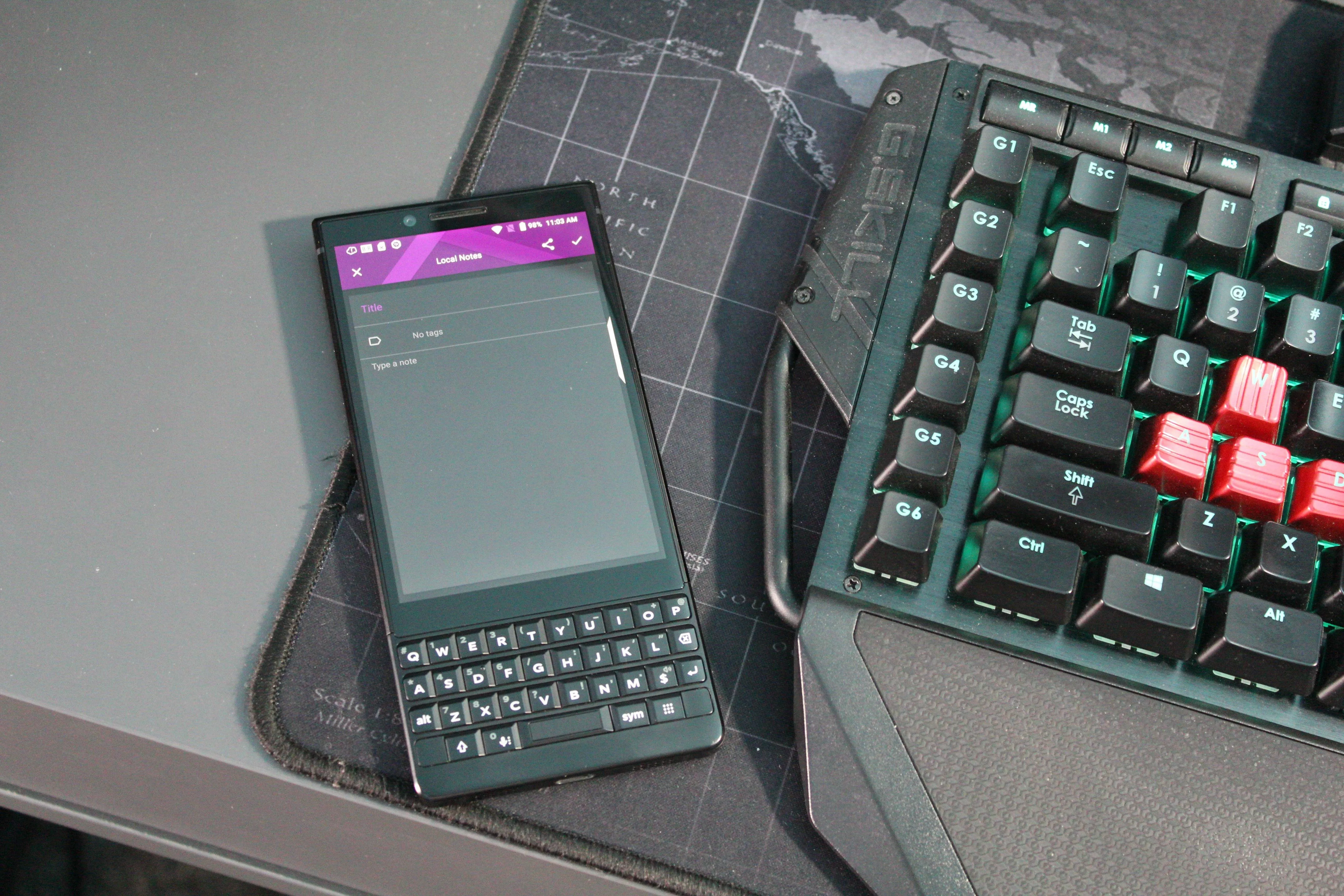
Jon Knight/Gadget Hacks
But TCL went even further. Each key on the keyboard can be assigned two apps, one that launches when you short-press the key, and another with a long-press. By selecting the Speed Key (the nine-dot key in the bottom-right corner of the keyboard) and the corresponding letter, you can launch let's say your email by pressing Speed Key + single pressing "E." You can assign all 26 letters for up to 52 shortcuts.
Then there's the Convenience Key. It's an extra button on the right side of the phone that can be programmed to any app or shortcut. You can even make it perform different actions based on location or events. For instance, the home profile is activated when you connect to your home Wi-Fi. Car is activated when you connect to your car's Bluetooth. Meeting is based on scheduled meetings saved in BlackBerry Calendar. Each profile (except for Google Assistant) can have up to 3 apps or shortcuts for a total of 12.
The Key2 also has the Productivity Tab. By default, you access it by swiping from the right side. Once open, you can access tabs that give you widget-like information for apps on your phone. To get the most from this feature, you will need to use BlackBerry apps such as Calendar, Hub+, Notes, and Contacts, which while redundant, do offer a bit more than their Google counterparts. Tabs can be rearranged and changed to your preference (you can add third-party widgets) to get the most out of this feature.

Jon Knight/Gadget Hacks
While its design isn't for everyone, the BlackBerry Key2 is the perfect phone for getting things done on the go. It has fantastic battery life, an excellent physical keyboard, and it's perfect for any work environment thanks to security features and preloaded apps such as Hub+ which puts all your emails and social accounts into one app. It lacks some features shared by the number one option, but it's also about $450 cheaper.
Phone 3: Pixel 3 XL
I was a little surprised that the Google Pixel 3 XL made this list. Google doesn't position this phone for productivity in their marketing, but as I started to fill in the comparison chart, I saw how good it was for multitasking. Thanks to Android, it can perform many tasks simultaneously. And thanks to Android 10, it gains even more versatility.
In Android 10, Google introduced a new desktop mode feature that allows you to run your Android phone in an interface more akin to desktop. It currently requires a USB-C to HDMI cable, but with the next OS update, Google will add the ability to kick your phone into desktop mode when you connect to any screen via Google Cast. This means you're just a $35 Chromecast away from turning any monitor or TV into a computer with your Pixel 3 XL.
The Pixel 3 XL also has a squeezable frame. This technology, first introduced by HTC, puts pressure-sensitive sensors on the sides of the phone which act as an extra button to launch apps. By default, you can only use this feature to launch Google Assistant or silence calls and alarms. However, you can remap the squeeze gesture using a third-party app and root access.
One of the big features of Android 9 Pie was Digital Wellbeing. Using a combination of features, Google gives you the ability to pull away from your phone, preventing it from being a distraction. For example, you can set timers on specific apps' usage. Find Instagram too hard to pull away while at work? Set a timer for an hour. Once the timer expires, the app is greyed out, reminding you to stay away and helping you return to work-related tasks.
For file transfer, Android 10 introduced a new feature called Fast Share. This is an Air Drop-like feature which finds any devices nearby running Android 10 or higher and establishes a connection via Bluetooth. Then, using Wi-Fi Direct, it lets you transfer files in an instant.
The Pixel 3 XL is also able to act as a wireless tether if you have a Chromebook. With this feature (known as Instant Tethering), once you are out of Wi-Fi range, the Chromebook will connect with your Pixel 3 XL and use its cellular data instead. This all happens automatically.
Purely on specs, the Google Pixel 3 XL isn't anything special when it comes to productivity. However, thanks to its quick update to Android 10, it's a great option. It is a phone that permits you to get your work done efficiently. And with features like Desktop Mode and Instant Tethering, you can get the job done even when you don't have all your supplies.
Phone 4: iPhone 11 Pro Max
Unlike the other phones on our list, many of the iPhone 11 Pro Max's differences (some being advantages) comes from iOS. The Apple-developed mobile operating system operates at times very differently from Google's Android. While it lacks some of the more innovative features of Android, it is not without some unique features of its own that usually work better as it's optimized for fewer devices.
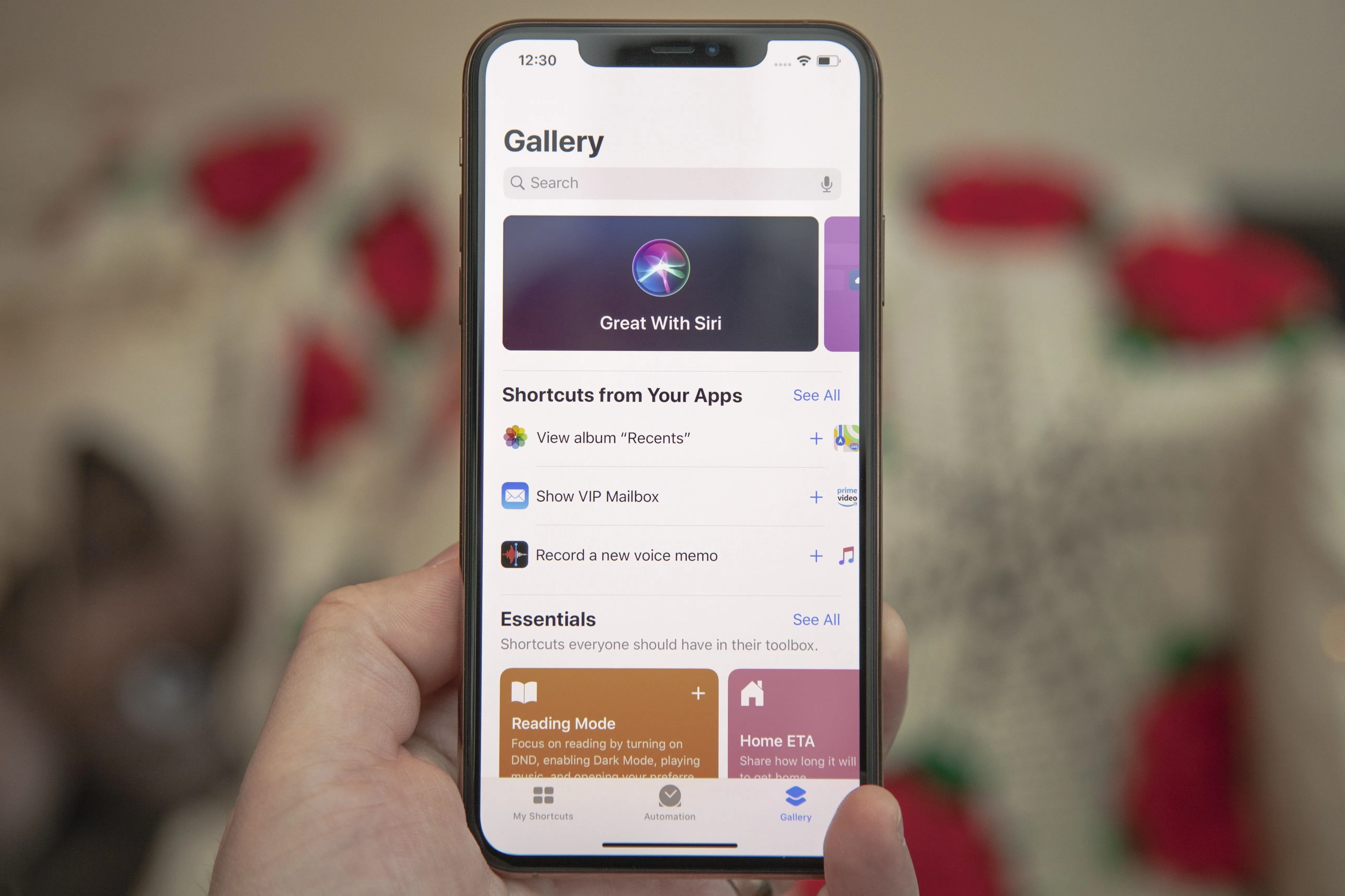
Justin Meyers/Gadget Hacks
A perfect example of an iOS advantage is Continuity. With the iPhone 11 Pro Max, you can make a call on any Mac, iPad, or iPod Touch when they are on the same network as your iPhone. Any text, image, or file that you copy on your iPhone is accessible on other Apple devices. You can start work on one Apple product and pick it up on another right where you left off. With the Apple ecosystem, your devices are profoundly connected, allowing seamless interactions without any hiccups.
The iPhone 11 Pro Max also comes with a well-protected password manager which deeply integrates into the platform. With it, you can create new passwords for those accounts using weaker ones. It also supports autofill so you can jump into any of your accounts without needing to type a thing.
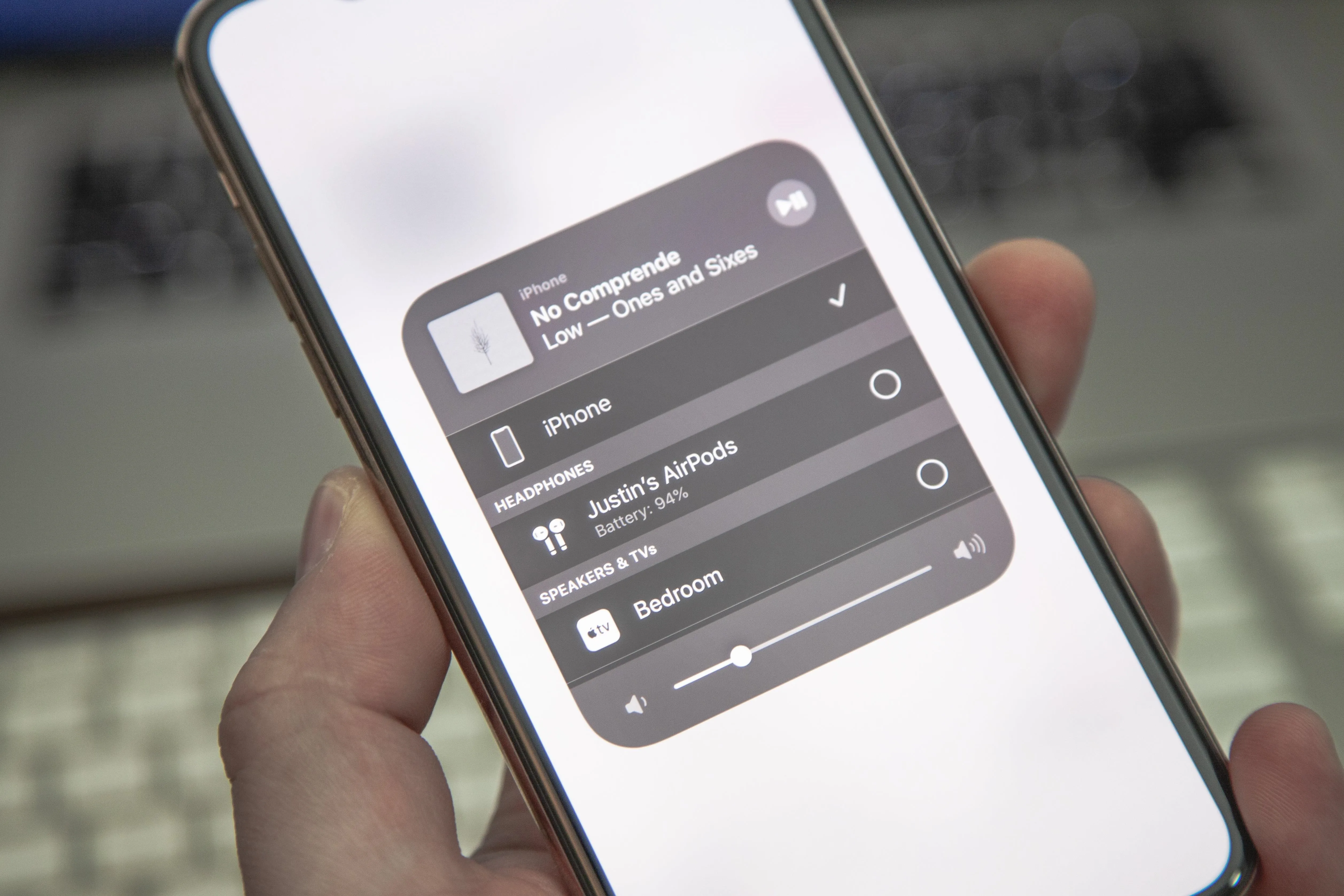
Justin Meyers/Gadget Hacks
Apple Notes, the built-in notepad app that syncs with iCloud, makes note-taking a breeze. Here, you can create a checklist, add headers, attach files, and much more. You can even use Siri to generate a note if your hands are tied.
And for those tasks you want to be reminded of later, there is Reminders. While some of its features are redundant with Notes, it does have one big difference: the ability to alert you of tasks based on what time it is or where you are. Using Reminders, you can remember to prep for upcoming meetings either when it hits a specific time or when you reach the building. And just like Notes, it is integrated into Siri to speed up the process.

Justin Meyers/Gadget Hacks
While the iPhone 11 Pro Max does lack the customization options of Android-powered devices, it is still a fantastic device for productivity. Continuity makes it so that once you are in Apple's ecosystem, you can start on one device and finish on another. Features like AirPlay let you mirror your screen easily, and the iPhone 11 Pro Max also supports Google Cast, allowing you to mirror apps to Chromecast and other Google Cast devices. It has one of the largest screens on the market and offers up to 512 GB of storage for all your files.
Phone 5: HTC U12+
It has been years since HTC was at the top of the smartphone industry. The once-beloved company has been struggling, partly because consumer awareness has tanked. Without proper marketing, their phones fall under the radar even though HTC makes quality devices, and that certainly includes the U12+.
The highlight of the HTC U12+ is Edge Sense. Edge Sense is a feature which is based on the pressure-sensitive sensors on the side of the phone. By squeezing this area, you can perform actions on your phone. You can launch different apps using a short squeeze, a squeeze and hold, or when squeezing within an app. You can even program a different app for double-tapping the pressure-sensitive areas. However, unlike other phones, HTC gives you nearly endless customization, allowing you to launch any app or action.

Jon Knight/Gadget Hacks
The U12+ is also the only Android phone in the US to officially support AirPlay. AirPlay is Apple's proprietary technology that enables you to stream audio and video from your phone to other sources. Having this flexibility can ensure productivity, as no matter if you or your office uses Apple products or Android products (it also supports Google Cast), you can mirror your phone for presentations and other work-related tasks.

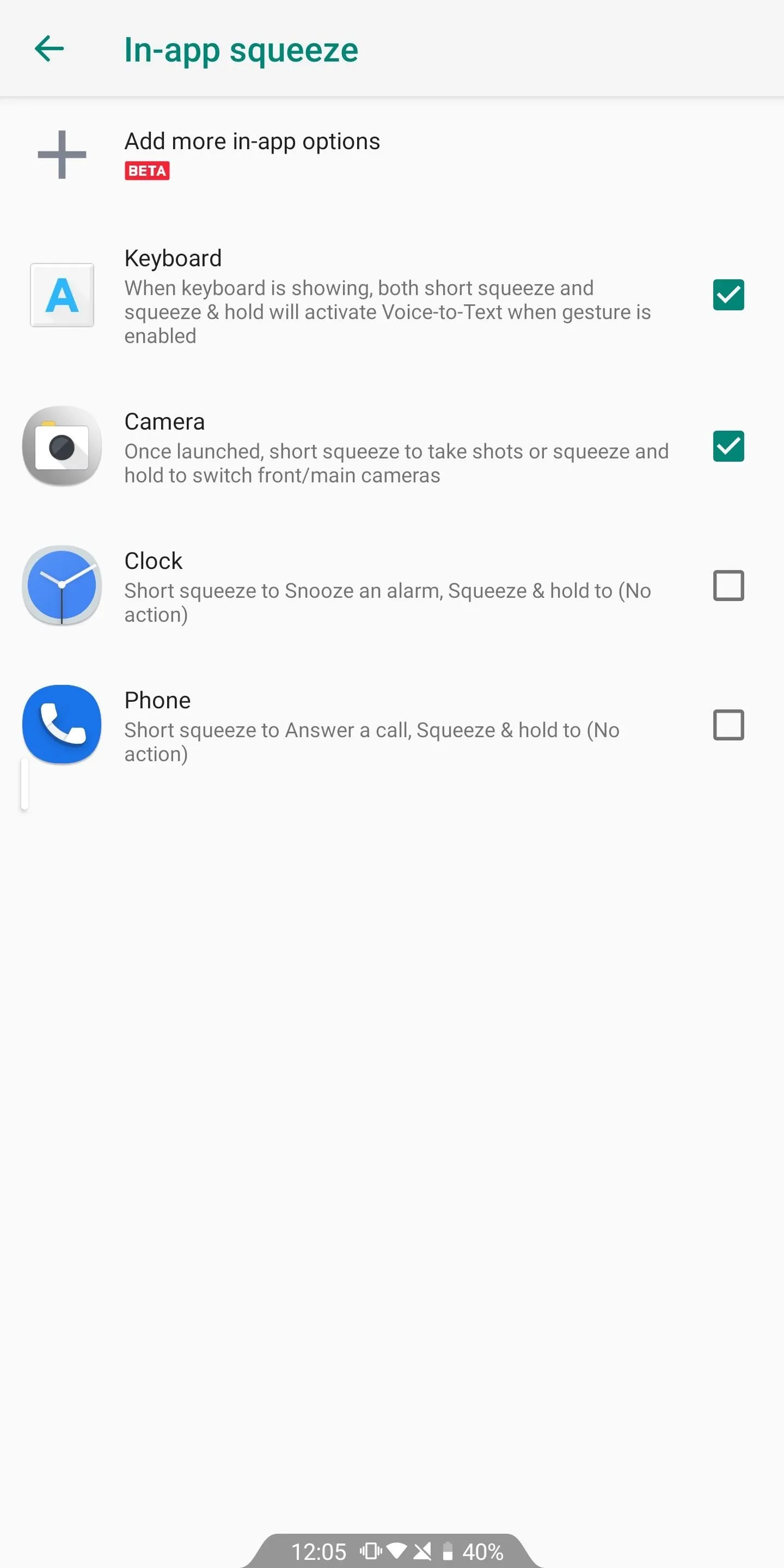


While the U12+ is one of the older phones on our list, it's still a fabulous option for anyone looking to improve their workflow. With Edge Sense, you can quickly jump around your phone in a way that the other phones on our list can't. And with official AirPlay and Google Cast support, you can show any info on your phone on a larger display, helping everyone see what you are viewing.
This article was produced during Gadget Hacks' special coverage on using your smartphone to boost productivity. Check out the whole Productivity series.
Cover image by Jon Knight/Gadget Hacks






Comments
No Comments Exist
Be the first, drop a comment!